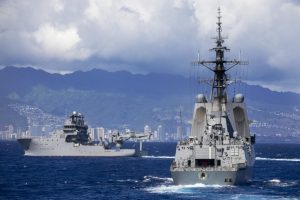Australia is embarking on the most significant reorientation of its strategic policy settings in more than a generation – and it’s all about assuming a more active role in defending a stable regional order in the Indo-Pacific. This is the key message in Canberra’s newly minted 2020 Defense Strategic Update and Force Structure Plan.
Motivated by intensifying strategic competition across the Indo-Pacific and the geopolitical fallout from COVID-19, the update provides a blueprint for how Australia will navigate what Prime Minister Scott Morrison says will be a “poorer, more dangerous and more disorderly” future. Its prescription is as clear-eyed as the assessment from which it arises. No longer able to rely on a 10-year strategic warning time to prepare for major threats against Australia and its interests, Canberra is tasking the Australian Defense Force (ADF) to get ready for grey zone competition and high-intensity conflict today. It’s a mission that requires a sharper set of defense planning objectives, which the update reframes into a three-pronged endeavor to “shape Australia’s strategic environment, deter actions against our interests and, when required, respond with credible military force.”
This is an ambitious agenda for a middle power to pursue. But it’s a necessary one if Australia is to achieve the overarching strategic objective that its 2017 Foreign Policy White Paper identifies as “a balance in the Indo-Pacific favorable to our interests.”
From Canberra’s perspective, the rapid deterioration in Australia’s strategic landscape boils down to a crumbling rules-based system, a decline in the United States’ capacity to maintain a regional balance of power, and an acceleration in China’s use of coercive statecraft backed by its proliferation of sophisticated anti-access/area denial systems. These developments threaten to bring about a Chinese sphere of influence by restricting the access and influence that Australia and other countries have enjoyed throughout the Indo-Pacific for the best part of the last 75 years. It’s a challenge that can only be addressed through a collective regional strategy in which all countries play a role in blunting Chinese adventurism, offsetting America’s relative decline, and bolstering the resilience of sovereign nations.
Australia has recently shown itself to be a leader in strengthening the regional order on issues as wide-ranging as the Trans-Pacific Partnership and lifting of technology standards, to its Pacific Step-Up, stance on the South China Sea, health security push, and efforts to counter foreign interference. Canberra’s defense update doubles down on the military part of this equation by prioritizing the Indo-Pacific, carving out a larger strategic role for Australia, transforming the U.S.-Australia alliance and positioning Australia as highly capable regional partner.
































